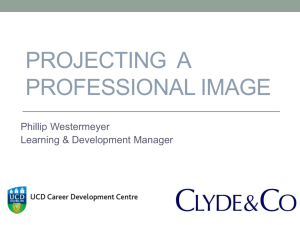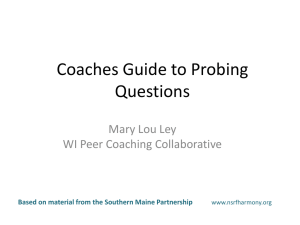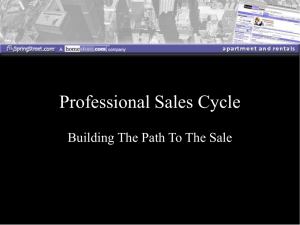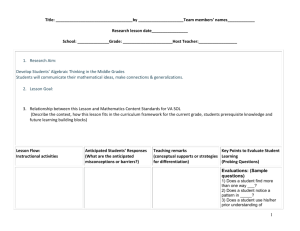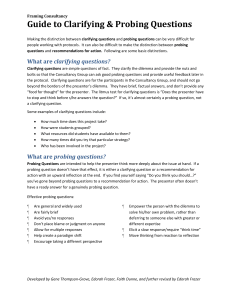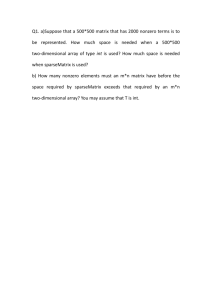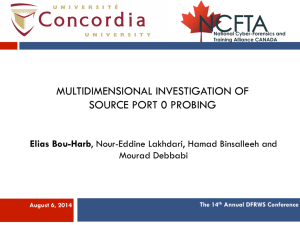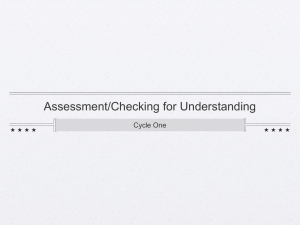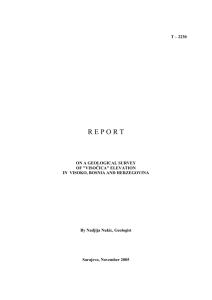Probing Questions vs Clarifying Questions
advertisement
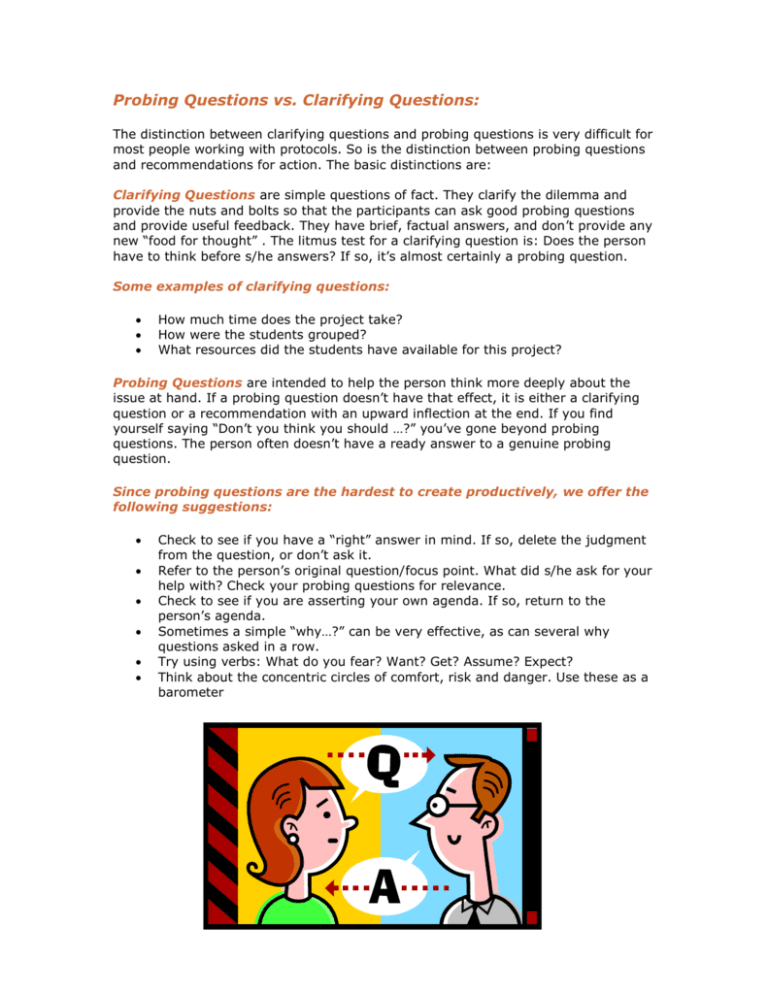
Probing Questions vs. Clarifying Questions: The distinction between clarifying questions and probing questions is very difficult for most people working with protocols. So is the distinction between probing questions and recommendations for action. The basic distinctions are: Clarifying Questions are simple questions of fact. They clarify the dilemma and provide the nuts and bolts so that the participants can ask good probing questions and provide useful feedback. They have brief, factual answers, and don’t provide any new “food for thought” . The litmus test for a clarifying question is: Does the person have to think before s/he answers? If so, it’s almost certainly a probing question. Some examples of clarifying questions: How much time does the project take? How were the students grouped? What resources did the students have available for this project? Probing Questions are intended to help the person think more deeply about the issue at hand. If a probing question doesn’t have that effect, it is either a clarifying question or a recommendation with an upward inflection at the end. If you find yourself saying “Don’t you think you should …?” you’ve gone beyond probing questions. The person often doesn’t have a ready answer to a genuine probing question. Since probing questions are the hardest to create productively, we offer the following suggestions: Check to see if you have a “right” answer in mind. If so, delete the judgment from the question, or don’t ask it. Refer to the person’s original question/focus point. What did s/he ask for your help with? Check your probing questions for relevance. Check to see if you are asserting your own agenda. If so, return to the person’s agenda. Sometimes a simple “why…?” can be very effective, as can several why questions asked in a row. Try using verbs: What do you fear? Want? Get? Assume? Expect? Think about the concentric circles of comfort, risk and danger. Use these as a barometer Think of probing questions as being on a continuum, from recommendation to most effective probing question. For example, from an actual coaching session in which a teacher was trying to figure out why the strongest math students in the class weren't buying in and doing their best work on what seemed to be interesting math "problems of the week" 1) You could have students use the rubric to assess their own papers. (recommendation re-stated as a question) 2) What would happen if students used the rubric to assess their own work? (recommendation re-stated as a probing question) 3) What do the students think is an interesting math problem? (good probing question) 4) What would have to change for students to work more for themselves and less for you? (better probing question) In summary, good probing questions: are general and widely useful don’t place blame on anyone allow for multiple responses help create a paradigm shift empower the person with the dilemma to solve his or her own problem (rather than deferring to someone with greater or different expertise) avoid yes/no responses are usually brief elicit a slow response move thinking from reaction to reflection encourage taking another party’s perspective Some final hints for crafting probing questions. Try the following questions and/or question stems. Some of them come from Charlotte Danielson’s Pathwise work, in which she refers to them as “mediational questions.” Why do you think this is the case? What would have to change in order for…? What do you feel is right in your heart? What do you wish…? What’s another way you might…? What would it look like if…? What do you think would happen if…? How was…different from…? What sort of an impact do you think…? What criteria did you use to…? When have you done/experienced something like this before? What might you see happening in your classroom if…? How did you decide/determine/conclude…? What is your hunch about .…? What was your intention when .…? What do you assume to be true about .…? What is the connection between…and…? What if the opposite were true? Then what? How might your assumptions about…have influenced how you are thinking about…? Why is this such a dilemma for you? Some Examples of Probing Questions: Why is a “stand-and-deliver” format the best way to introduce this concept? How do you think your own comfort with the material has influenced your choice of instructional strategies? What do the students think is quality work? You have observed that this student’s work lacks focus – what makes you say that? What would the students involved say about this issue? How have your perspectives on current events influenced how you have structured this activity? Why aren’t the science teachers involved in planning this unit? Why do you think the team hasn’t moved to interdisciplinary curriculum planning? What would understanding of this mathematical concept look like? How would you know students have “gotten it”? Why did allowing students to create their own study questions cause a problem for you? Why do you think the expected outcomes of this unit weren’t communicated to parents? What was your intention when you assigned students to oversee the group activity in this assignment? What evidence do you have from this student’s work that her ability to reach substantiated conclusions has improved? How might your assumptions about the reasons why parents aren’t involved have influenced what you have tried so far? How do you think your expectations for students might have influenced their work on this project? What do you think would happen if you restated your professional goals as questions? What other approaches have you considered for communicating with parents about their children’s progress?
